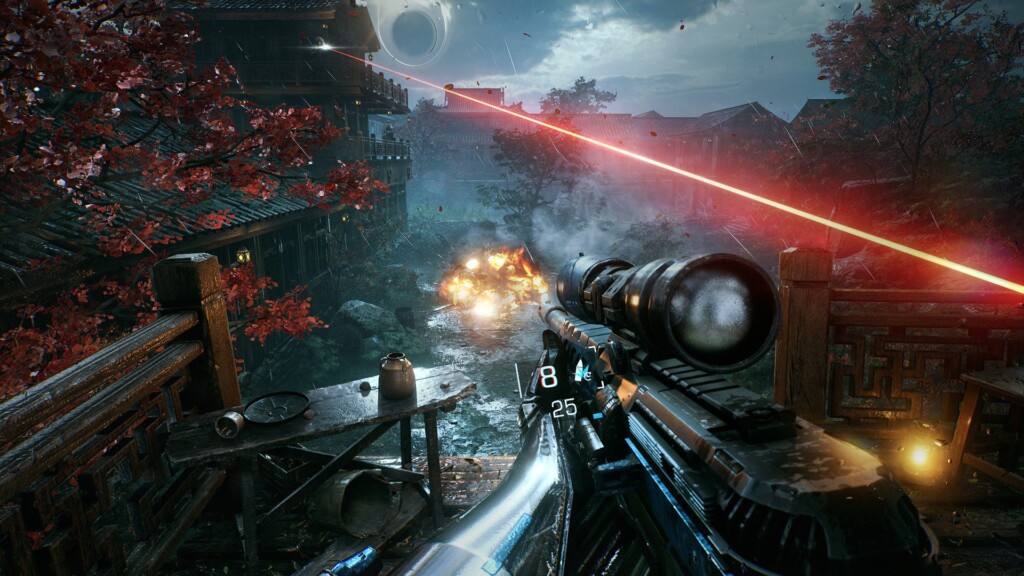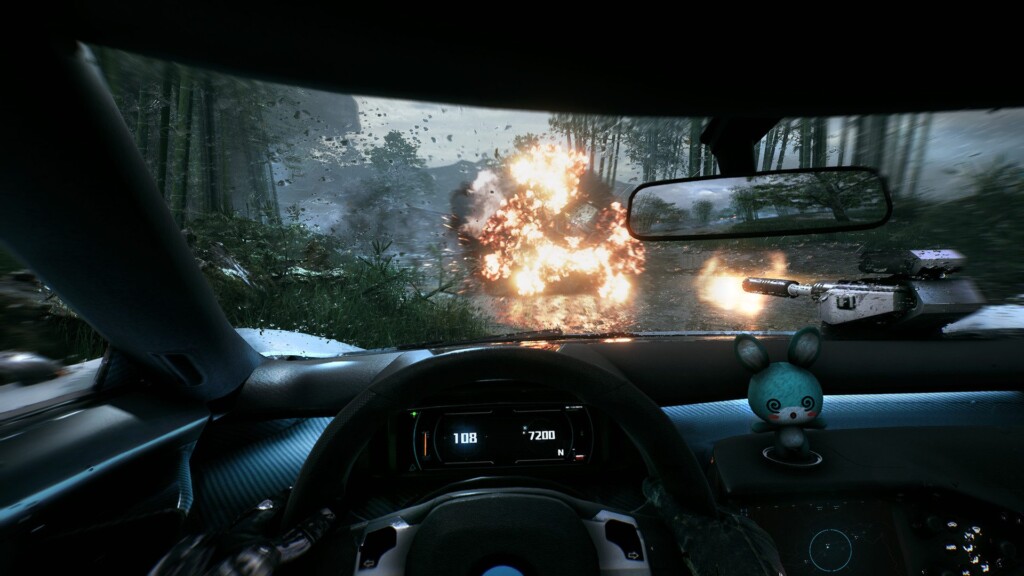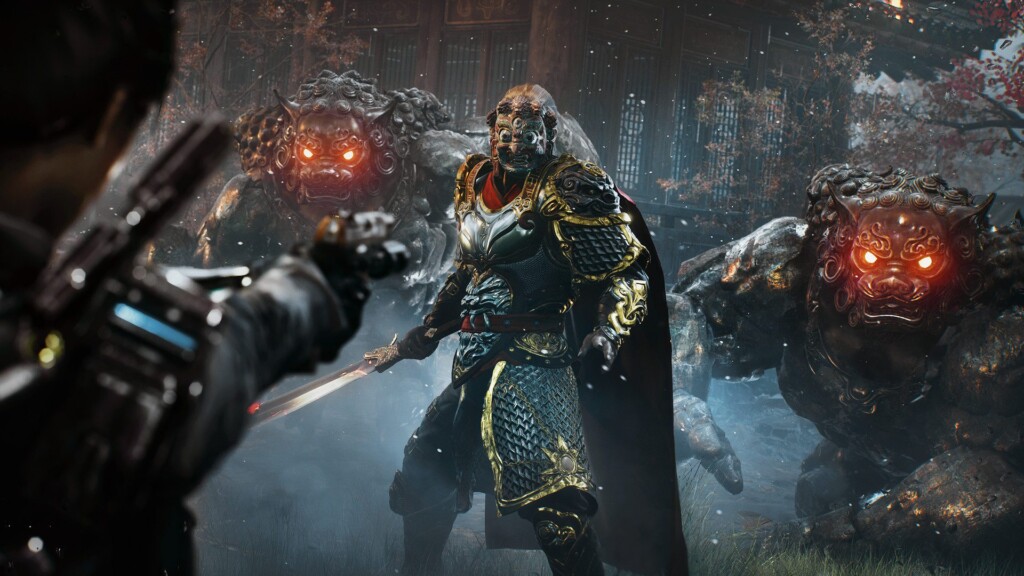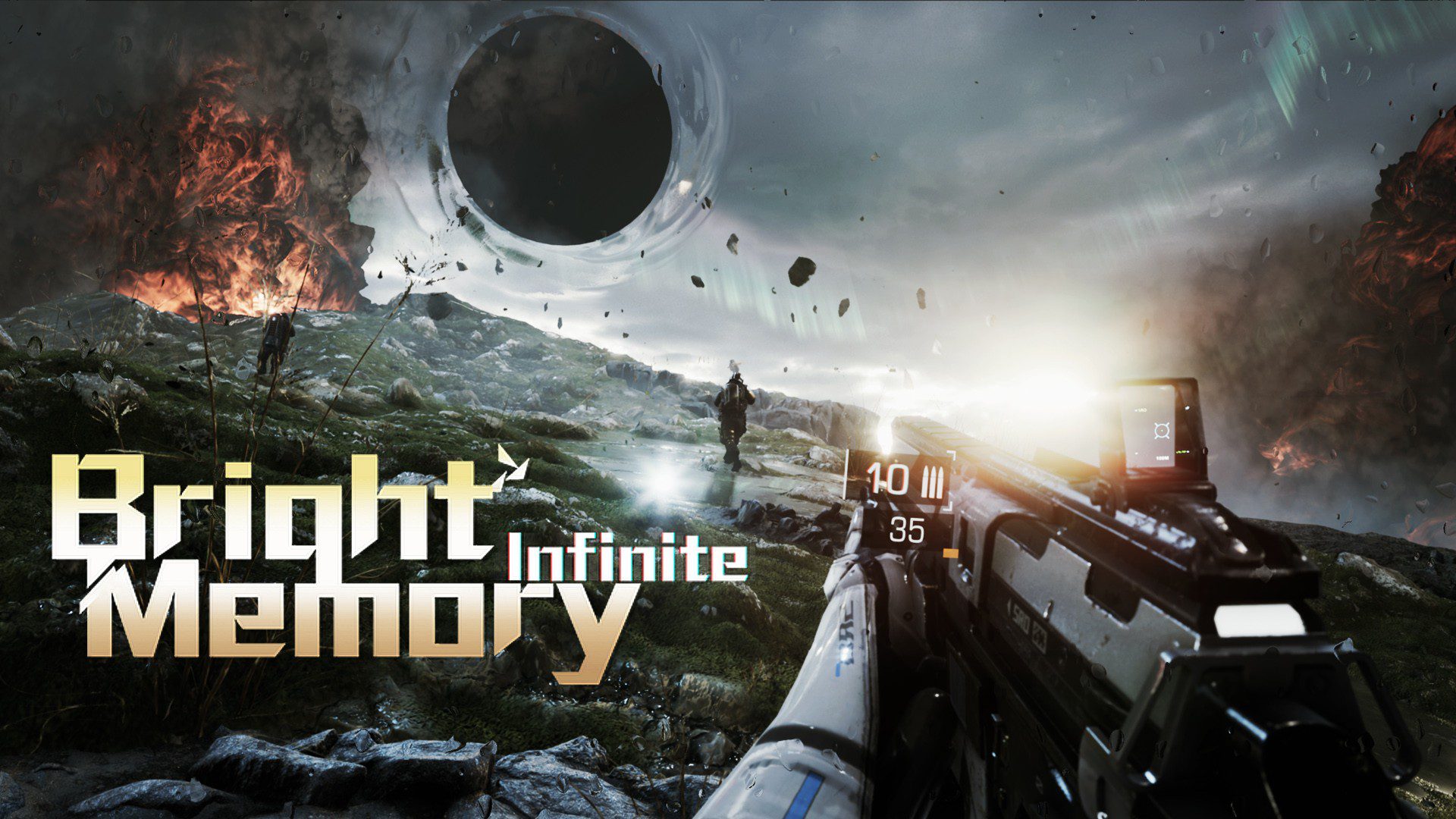Bright Memory: Infinite surprised me. It’s a new IP from a team consisting of pretty much one lone dude that is really short, features some serious waifu bait, and puts it all in a very Call of Duty Infinite sort of world. None of these things on their own should work at all for me, let alone all together as one package, but I’ll be damned if Bright Memory: Infinite doesn’t leave me feeling like FPS games still have a future and that people are trying things not approved by a committee of investors.
It’s not often in the modern age of the FPS, outside the amazing DOOM revival series, that an FPS will take chances, or that an original IP comes around. The Call of Duty-ing of the genre has killed the fun and amazement these sorts of games provided during the inception of the genre. Doom was dark and gritty, Duke 3D was irreverent and fun, the original Call of Duty showed how reality could bleed into the video game space, Half Life introduced one long unbroken narrative and world, Unreal Tournament popularized online multiplayer, and so on. It seemed like every FPS was trying to push the genre forward.
Sure, there were a lot of FPS clones coming out, but even those tried to do something new with the formula. Today, it often feels like we simply get more Call of Duty by committee. Everything feels the same and lifeless, and every box art can be swapped with any other FPS game without much issue. Studio’s just aren’t taking chances, and the great developers of old are suck in the CoD mines churning out consistent 5 out of 10 games annually until they die. Bright Memory: Infinite is everything the modern FPS is not, and it’s far better for it. It’s a balls-to-the-wall FPS that keeps you engaged the whole way though because it never lets up.

Bright Memory: Infinite takes place in the year 2036 where a weird black hole opens up and you’re sent in to find out what’s up and deal with it. Look, that’s enough already to make it the most unique FPS in the past decade. The big sky hole messes with everything, but most notably with time itself. You suffer these brain-melting moments where enemies from the past with mystical powers pop in and face you in combat. It’s all so weird and comes at you at such a fast pace you never have time to process it. This actually helps the game, because if you sat back and thought about everything during some 10 hour campaign, it would fall apart. In fact, the story is a huge mess and makes little sense when you think about it. So, you know, like most classic FPS games from the ’90s.
The gun combat it tight and fun. It has a very modern feel and weapons do solid damage throughout the campaign. you won’t be leaving guns behind as they lose their usefulness like in other games. What I really appreciated was the weapon limit the game uses. Instead of getting tons of weapons, something developers s seem to think makes their games better, Bright Memory: Infinite keeps it to just a few weapons. Just what you can essentially carry in real life with a rifle, drum-feed shotgun, sniper rifle, and a pistol. They all feel good and stay fresh as you can collect special ammo for them to help deal with enemies. It’s a lot of fun, and helps with the fast-paced action.
But the weapons are only part of the action as you also have a sword, a grapple launcher, and some mystical powers. These powers and abilities, including for your weapons, can all be upgraded like a pretty basic RPG by collecting ancient statues. This allows you to play the way you want. If you are more focused on weapons, you can go that way, or focus more on your blade, or try find the right balance between both. And because the game is so short you won’t be able to upgrade everything which makes replaying it with a new layout, or in a new style, pretty fun. With long games I tend to not replay them for a few years because of the time investment. I’m not going to play a huge game again just to try different powers or play as a baddie.

Your sword, combined with your powers makes for some interesting combat potential. You can pop enemies up into the air and slash them to pieces or shoot them as you dash in and out of other enemies. It makes for a good bit of fun that keeps you on your toes. Unfortunately, you have an energy limit which means you can’t simply slash in the air, or grab and pull enemies like a Jedi. This limits the full combo potential the game has, and I do wish it lasted a bit longer to give you more options. Still, it’s a great bit of fun sliding and slashing enemies, popping up other and putting a few slugs into them while floating and exploding another as you dash in and out. When Bright Memory: Infinite is moving, (and that’s almost always) it’s moving at break-neck speeds.
Bright Memory: Infinite might just be a masterpiece because of what a single developer was able to accomplish. It blows my mind how one guy can create a game more enjoyable, more interesting, more balls-to-the-wall experience than most AAA publisher with buildings full of people can. Imagine all the wildest FPS game of the past decade (DOOM, Shadow Warrior, Titan Fall, etc.) and merge them into one package, removing the slow-paced fluff in there only meant to meet some arbitrary 20 plus hour campaign. I was more engaged and committed to Bright Memory: Infinite’s 2 hour-ish campaign than any Call of Duty game released the past decade.
But, as you might expect from a lone project of this massive scale, everything doesn’t quite work. The standard key-bindings are a mess that has your fingers moving in very unnatural ways, so rebind those ASAP. The stealth section, which might seem like a nice change, is pretty boring as enemies don’t even try very hard to look for you and kills much of the strong pacing the game had going for it. The animated kills are neat, but the stealth really is only there to help extend the campaign because it was really short. The gameplay is great on the whole, but the driving section feels really bad. It’s a case of trying to do too much and, well, being pretty much one lone programmer. Your mounted gun is stationary and you have no control over it outside of it shooting straight ahead. The turning is also really finicky and you’ll often slam into barriers.

The game is also not only short, but pretty darn linear. I think the short experience hides this pretty well as the game wants you always moving forward, but it’ll leave you wanting a more open experience to explore. The design is very ’90s in this respect. You move down linear corridors until you reach a more open arena where the bigger characters and bosses come at you. As an old-timer who grew up on Boomer Shooters I didn’t mind this all that much, but modern FPS fans might be disappointed in the claustrophobic feeling of the game. It’s good stuff, but you just wish there was more to it.
But those are only minor issues that would really only hurt Bright Memory: Infinite if it were something along the lines of a 10 hour plus adventure. It’s short length helps cover up a lot of the underlying issues. The graphics are also fantastic and the game is amazingly well optimized. The games graphics are great and it looks fantastic even on mid-range machines. There is a bunch of DLC that consist of new outfits for your action waifu, but I don’t mind. I don’t care about sexy costumes myself, but If you do they are there, and it helps support the studio since the game itself is only $20.
FYQD-Studio has created an FPS that strips away all the fluff and gives you a very fast and visceral experience that ends just when it manages to play all its cards. I’m always a fan of the idea that less is more, and Bright Memory: Infinite is the perfect example of that. It leaves you wanting more, something much better than a game that you’re happy to simply complete because you’ve invested tons of hours into and want your $60 worth from it. This is a great showcase of what a single person, and now a small team, can create and knowing we are getting more is pretty great. It dosen;t do anything new, but what it does, it does well.
Final Score:
*A review code was provided by the publisher*

